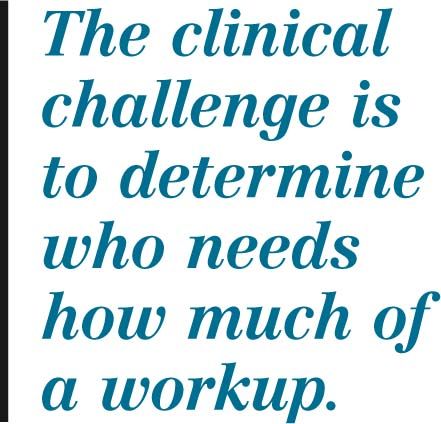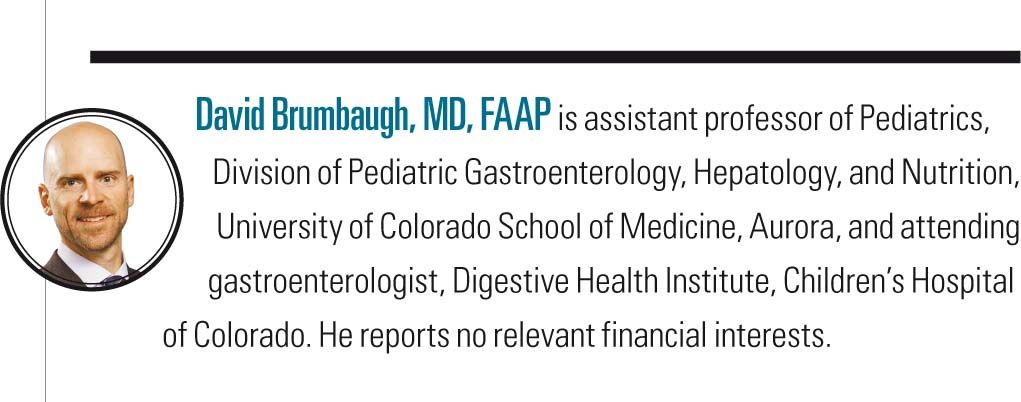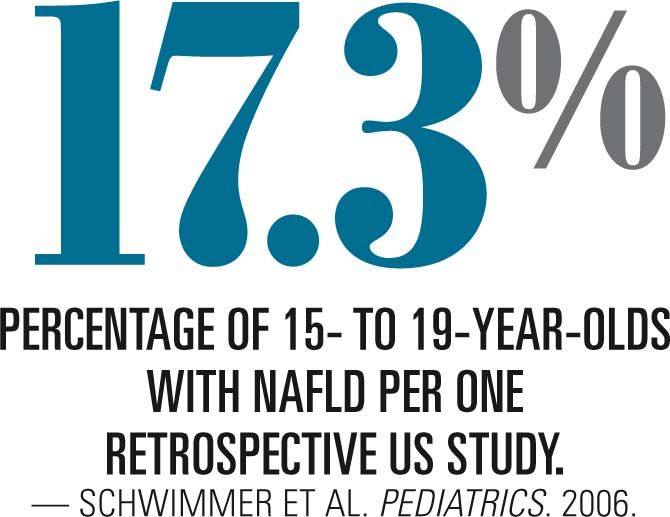NAFLD: Silent manifestation of obesity
As the prevalence of childhood obesity has grown, said David Brumbaugh, MD, FAAP, so has the importance of identifying early signs of nonalcoholic fatty liver disease (NAFLD).
As the prevalence of childhood obesity has grown, said David Brumbaugh, MD, FAAP, so has the importance of identifying early signs of nonalcoholic fatty liver disease (NAFLD).
In his presentation "Fatty liver, a sign of food toxicity?" at the American Academy of Pediatrics 2016 National Conference and Exhibition, Brumbaugh told attendees that community pediatricians must recognize that NAFLD is frequently a silent manifestation of obesity and the metabolic syndrome. Obesity is so prevalent that it becomes a challenge for community pediatricians to identify which obese patients need the most intensive interventions.
Related: Pediatric nonalcoholic fatty liver disease
For obese children, screening for NAFLD typically begins between the ages of 9 and 11 years. If a routine checkup reveals that a child in this age group is obese, also check for complications of obesity. Blood tests typically ordered include fasting glucose, fasting lipid profile, hemoglobin A1C, and a liver panel-focusing largely on alanine aminotransferase (ALT), the most useful screening test for chronic liver inflammation.

If an obese patient has laboratory evidence of chronic liver inflammation, screening for other liver diseases (including hepatitis B and C, autoimmune hepatitis, and Wilson disease) is necessary. This laboratory evaluation can be initiated by the general pediatrician alone or collaborating with a specialist. Because obesity has become so common, a child might have both NAFLD and another chronic liver disease such as hepatitis C simultaneously. If any of these tests are positive, referral to a hepatologist is indicated for further assessment and treatment.
If screening for other liver diseases proves negative, the use of liver biopsy for diagnosis of NAFLD remains controversial. How relevant is liver biopsy for diagnosing NAFLD? It is the most specific test, providing information about disease progression that no other test currently gives. However, skeptics might say that whether the patient has merely fat storage or fat with inflammation and scarring, the treatment is identical: lose weight.
The counterargument? If one can tell a family, "This fat stored in the liver is causing chronic scarring in your 12-year-old child. A percentage of patients continue to have worsening scarring and inflammation over time. That can potentially lead to liver failure," then experience suggests that this wakes up families as to the severity of the problem. It may provide more motivation to engage in family-wide lifestyle changes necessary for weight loss.

NEXT: Commentary
COMMENTARY
Nonalcoholic fatty liver disease (NAFLD) is the most common cause of chronic liver disease in children. Serum alanine aminotransferase (ALT) is the laboratory assay most used in the evaluation of NAFLD. In the Screening ALT for Elevation in Today's Youth (SAFETY) study,1 we provided estimates for the appropriate reference ranges for ALT in children: 26 U/L for boys and 22 U/L for girls. Clinical laboratories should be encouraged to use these data to improve the standardization of pediatric care.

Noninvasive blood-based and imaging markers for NAFLD and nonalcoholic steatohepatitis (NASH) in children are an active research area, but have yet to provide a tool validated for clinical use. Liver biopsy should be regarded as a diagnostic tool, not a motivational tool. Liver biopsy is safe in children with suspected NAFLD and has been shown to provide clinically meaningful data for children with chronic liver chemistry elevation.
The value of a liver biopsy in NAFLD evaluation was recently demonstrated in a prospective study of 347 children identified as having suspected NAFLD by screening in primary care and referred to pediatric gastroenterology.2 Of children who had a liver biopsy for suspected 10 NAFLD, nearly 25% had a different form of liver disease. There were 17 other liver diseases identified.
Next: What's autism, what's not
The clinical challenge is to determine who needs how much of a workup. The greater the potential for hepatotoxicity and the more advanced the disease is believed to be, the greater the need to be certain of the diagnosis and to properly grade and stage the disease. Although there is great passion in the debate over the role of liver biopsy in the diagnosis of NAFLD and NASH, no other diagnostic modality has shown sufficient accuracy to be appropriate for clinical use in place of biopsy. One can choose not to do a biopsy, but then rather than declaring a diagnosis of NAFLD, a child should be considered to have suspected NAFLD. There will be some children who are misclassified if a diagnostic certainty is proclaimed. We have observed this leading to a delay in diagnosis of important alternative diagnoses, such as autoimmune hepatitis. The benefits of liver biopsy will continue to need to be balanced against the potential risks on a case-by-case basis.

References
1. Schwimmer JB, Dunn W, Norman GJ, et al. SAFETY study: alanine aminotransferase cutoff values are set too high for reliable detection of pediatric chronic liver disease. Gastroenterology. 2010;138(4):1357-1364, 1364.e1-1364.e2.
2. Schwimmer JB, Newton KP, Awai HI, et al. Paediatric gastroenterology evaluation of overweight and obese children referred from primary care for suspected non-alcoholic fatty liver disease. Aliment Pharmacol Ther. 2013;38(10):1267-1277.
Mr Jesitus is a medical writer based in Colorado. He has nothing to disclose in regard to affiliations with or financial interests in any organizations that may have an interest in any part of this article.